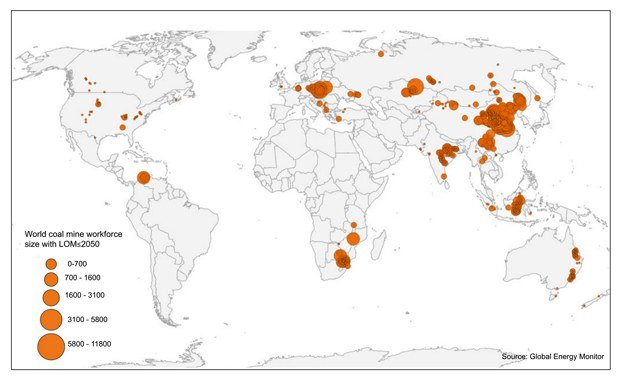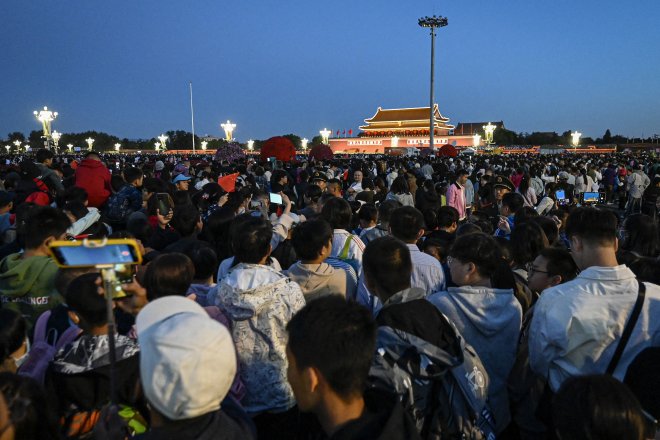UN: Environmental threat looms as bottled water consumption grows exponentially
More than 1 million bottles of drinking water are sold globally every minute, which comes at a significant environmental, climate, and social cost, a new U.N. report said.In 2021, global bottled water sales reached 350 billion liters, valued at an estimated U.S.$270 billion that is expected to cross half a trillion by 2030, said the report released Friday by the United Nations University Institute for Water, Environment and Health.
“The rise in bottled water consumption reflects decades of limited progress in and many failures of public water supply systems,” said Kaveh Madani, the director for the Canada-based institute.
The bottled water industry is one of the fastest-growing in the world, more rapidly than any other food market, with a 73% rise in sales between 2010 to 2020.
The report said 60% of the sales worldwide are in the “Global South,” which includes Asia-Pacific, Africa, Latin America, and the Caribbean.
The industry’s dramatic growth is helping to hide global failure in public systems in many parts of the world to provide people their basic need, such as safe and drinkable water, and even contributing to the plastic pollution crisis, the U.N. institute said.
The primary source of bottled water globally is groundwater, which is itself depleting rapidly in parts of the world due to over-extraction for agriculture and climate change-exacerbated droughts.
 Graphics showing top 50 countries in 2021 by total bottled water consumption and composition by water type. Credit: UNU INWEHThe world is on the brink of a water crisis, with the demand for fresh water projected to exceed the supply by 40% by the end of this decade, a panel of experts said in another report released on Friday.
Graphics showing top 50 countries in 2021 by total bottled water consumption and composition by water type. Credit: UNU INWEHThe world is on the brink of a water crisis, with the demand for fresh water projected to exceed the supply by 40% by the end of this decade, a panel of experts said in another report released on Friday.Experts say nearly 2 billion people worldwide do not have access to safe water.
The U.N. report said it would require an annual investment of less than half the U.S.$270 billion spent annually on bottled water to ensure clean tap water access for all.
“This points to a global case of extreme social injustice, whereby billions of people worldwide do not have access to reliable water services while others enjoy water luxury,” Madani said.
Asia-Pacific is the largest bottled water market
Based on the analysis and data of 109 countries, the U.N. report estimated total global revenue in bottled water at U.S.$1.2 trillion.
The Asia-Pacific region constitutes about half of the global bottled water market in revenue, said the report, released just a few days ahead of the U.N. Water Conference in New York on March 22-24.
Southeast Asian countries -- Indonesia, Thailand, Malaysia, and Vietnam -- featured prominently in the top 25 lists of bottled water total sales in dollars and consumption in liters.
 A man carrying water bottles crosses a bridge next to accumulated garbage floating on the Negro River in Manaus, Amazonas state, Brazil, June 6, 2022. Credit: APMeanwhile, just three countries - the United States, China, and Indonesia – constituted half of the world’s bottled water market, according to the report.
A man carrying water bottles crosses a bridge next to accumulated garbage floating on the Negro River in Manaus, Amazonas state, Brazil, June 6, 2022. Credit: APMeanwhile, just three countries - the United States, China, and Indonesia – constituted half of the world’s bottled water market, according to the report.The U.S. bottled water market is estimated around U.S.$64 billion in sales, or almost a quarter of the total revenue globally, followed by China (U.S.$50 billion, or 18%) and Indonesia (U.S.$22 billion, or 8%).
In annual spending per capita and volume of bottled water sold per capita, Singapore emerged ahead of others, with each Singaporean spending U.S.$1,348 dollars to buy 1,129 liters of bottled water annually.
The report also noted that there was discrepancy on why people consumed bottled water, with the Global North citizens often perceiving it as a healthier and tastier – and thus a luxury - product, while for the Global South it is primarily a necessity.
“Marketing campaigns by the bottled water industry aiming to promote the concept of bottled water "purity" and to discredit tap water for its poor quality, also played their role,” the report said.
However, according to some 60 case studies from more than 40 countries, there were numerous cases of inorganic, organic, and microbiological contamination found in both local and global brands.
“This review constitutes strong evidence against the misleading perception that bottled water is an unquestionably safe drinking water source,” lead author Zeineb Bouhlel said.
Even then, bottled water generally faces fewer water quality regulations and less scrutiny than public utilities, co-author Vladimir Smakhtin said.
Around the world, as many as 4 billion people experience water shortages for at least one month a year, according to the U.N.
 A price information sign is displayed over bottled water at a grocery store in Glenview, Illinois, US, Jan. 10, 2023. Credit: APAt the same time, 25% of the population lives in countries facing an extremely high level of water stress, the World Resources Institute said Friday.
A price information sign is displayed over bottled water at a grocery store in Glenview, Illinois, US, Jan. 10, 2023. Credit: APAt the same time, 25% of the population lives in countries facing an extremely high level of water stress, the World Resources Institute said Friday.“Climate change is exacerbating the problem, intensifying floods and droughts, shifting precipitation patterns, and fueling sea level rise,” it said in a statement.
Bottled water adds to plastic pollution
Just five top companies – PepsiCo, Coca-Cola, Nestlé, Danone, and Primo Corporation - have combined sales of U.S.$65 billion -- more than a quarter of the global total.
The world generated around 600 billion plastic bottles in 2021, amounting to approximately 25 million metric tons of plastic waste, the U.N. report said.
 A resident loads bottled water onto a bicycle outside a supermarket in Shanghai, China, Mar. 29, 2022. Credit: APMost of it is not recycled but is disposed of in landfills or as unregulated waste, despite growing social awareness that plastic waste takes a millennium to degrade.
A resident loads bottled water onto a bicycle outside a supermarket in Shanghai, China, Mar. 29, 2022. Credit: APMost of it is not recycled but is disposed of in landfills or as unregulated waste, despite growing social awareness that plastic waste takes a millennium to degrade.When plastic bottles degrade in the environment, they form tiny particles known as microplastics, which can contaminate food and water, posing a risk to human health.
Another study released last week stated that an estimated 170 trillion tiny plastic fragments now float on the world’s oceans. It was estimated to be up to 4.9 million tons.
[圖擷取自網路,如有疑問請私訊]
|
本篇 |
不想錯過? 請追蹤FB專頁! |
| 喜歡這篇嗎?快分享吧! |
相關文章
AsianNewsCast






















